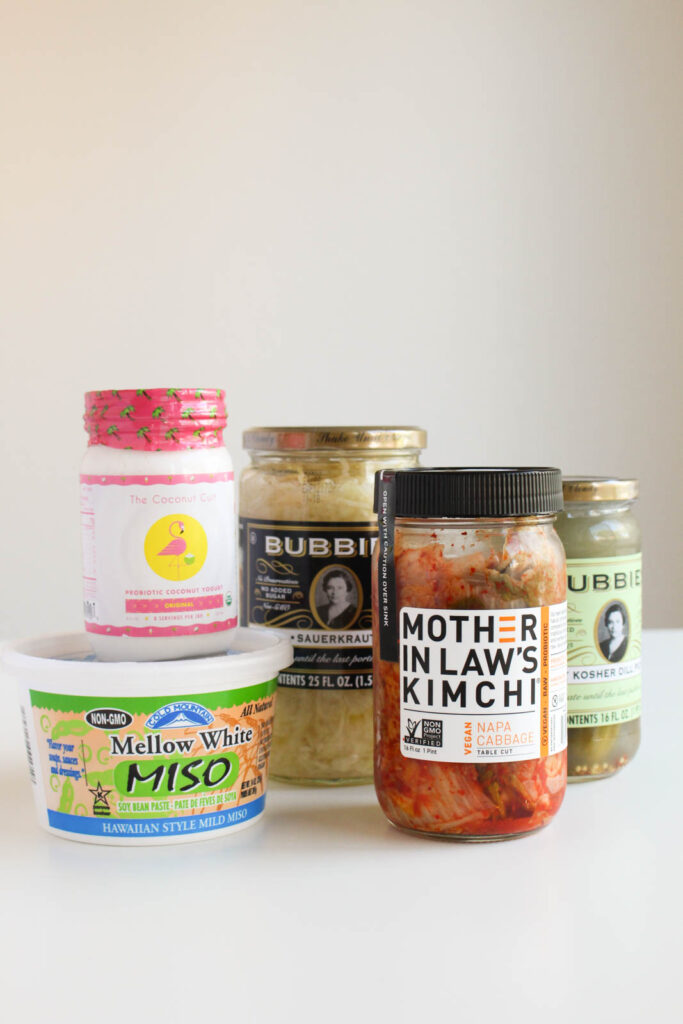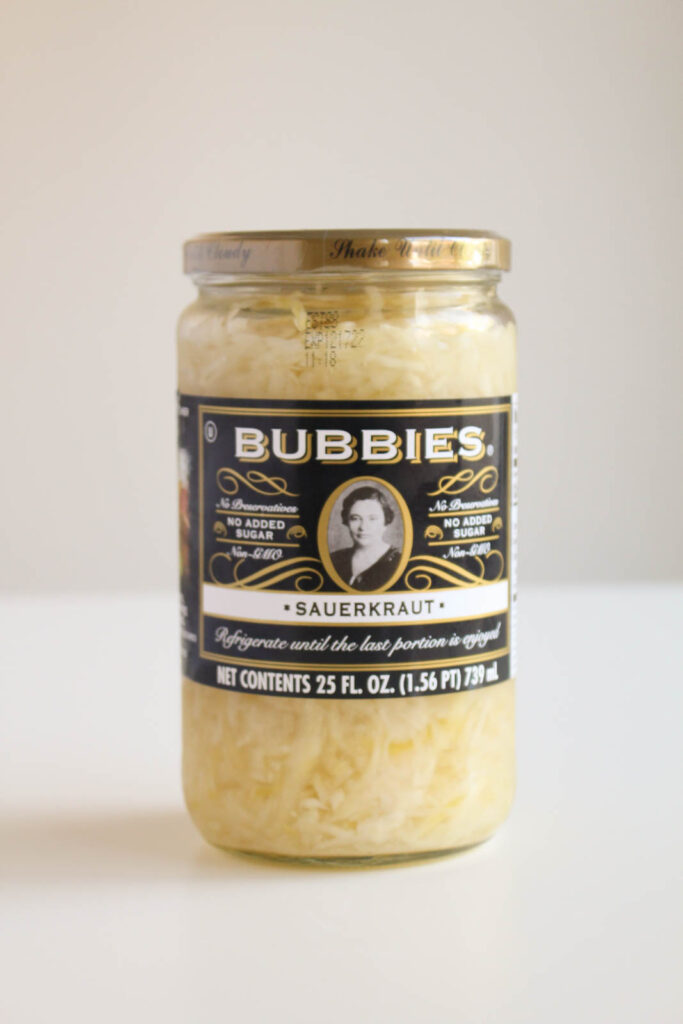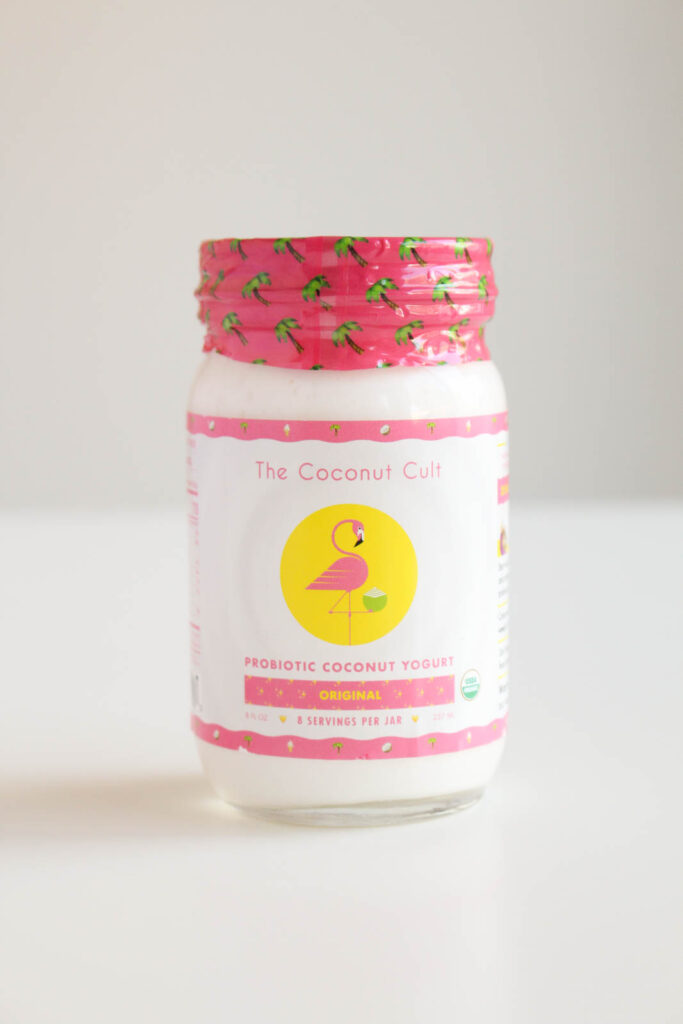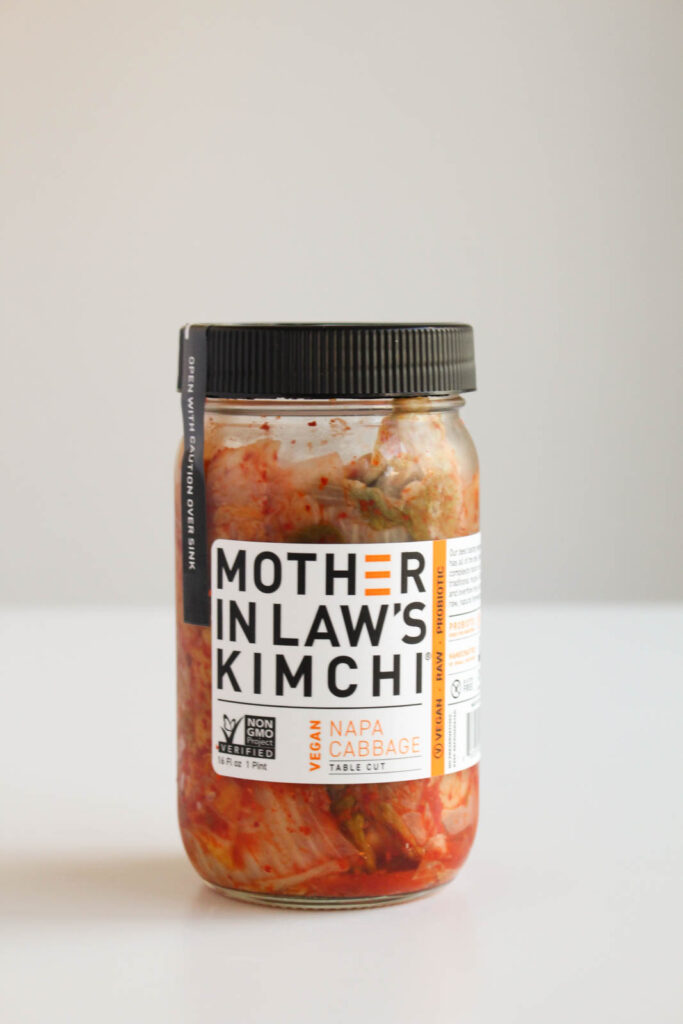A Guide to Probiotics
Probiotics are an incredibly important part of having a healthy gut, and having a healthy gut is key to overall wellness. We have TRILLIONS of bacteria living inside of us, so we need to be feeding these good gut bugs with the right foods. A guide to probiotics can help you do just that!

What Are Probiotics?
Probiotics are a certain type of friendly bacteria (microorganisms) that live inside your gut. They are often taken by supplement, but you can get them through foods as well. In my opinion, it is often better to get probiotics through food because they can potentially be more stable than supplements. And you are also potentially getting prebiotics at the same time (the food that feeds the probiotics).
Health Benefits of Probiotics
The diverse community of microorganisms in your gut is called the gut microbiome, and most of the gut flora is in your colon, or large intestine. Maintaining a healthy microbiome is essential to overall health.
Some of the many ways that probiotics and fermented foods can improve our health are:
- improve digestion
- protect cognitive function
- boost immunity
- help protect against many types of cancer
- help protect you from certain types of infections and diseases
- help treat irritable bowl syndrome (IBS)
- kill harmful yeast and microbes
- provide minerals to build bone density
- help protect against obesity

Probiotic-Rich Food Sources
- YOGURT – Yogurt is one of the most common food sources of probiotics. You want to make sure you are eating a good quality yogurt with minimal added sugar. (You can easily make your own at home too!)
- SAUERKRAUT – Sauerkraut is most commonly fermented cabbage. It has a strong tangy flavor that goes well with other savory foods. It is one of the oldest traditionally fermented foods, and is high in fiber, and many different vitamins.
- KEFIR – Kefir is a drinkable yogurt with many of the same benefits of regular yogurt.
- PICKLES – Your favorite sandwich partner actually has probiotics too! Not all pickles are created equal though, you need to make sure they are fermented. Most store-bought pickles are made with vinegar, which makes them taste sour, but they are not actually fermented in a brine.
- KIMCHI – Kimchi is a traditional fermented Korean dish that is made with cabbage and other vegetables. It is often spicy, so it can add a lot of flavor to meals.
- MISO – Miso is made by fermenting soybeans with rice or barley with koji, which is a type of fungus. It is traditional is Japanese cuisine, and in recipes like miso soup. If you have celiac disease, you need to read the ingredients and make sure that it was fermented with rice, as barley is not gluten-free.
- TEMPEH – Tempeh is also made from fermented soybeans. It is a dense mold that can be crumbled and sautéed, or even cut into segments and grilled. It is also a really great source of protein too!
- RAW CHEESE – Raw cheese that has not been pasteurized, and can be particularly high in probiotics. I don’t personally eat dairy, but if you can tolerate it, this is an option.

HOW TO FERMENT VEGETABLES
This post is a really great resource on how to ferment vegetables. They even provide several different recipes for things like sauerkraut and kimchi. It is actually very simple to ferment your own veggies, it just takes a little patience.

WHAT ABOUT SUPPLEMENTS?
I personally think that incorporating fermented foods with live bacteria into your diet is the best way to get probiotics. But if you feel like you need a little more help, and want to take a supplement, here are some tips.
- Look for “live and active cultures” on the packaging. This is important and makes it a true probiotic.
- You want to make sure it has at least 5 strains of bacteria, strain diversity is important. If it only has 1 or 2 strains of bacteria, skip it, it won’t be as beneficial.
- You want it to have at least 5 Billion CFU per serving. CFU stands for colony forming units, and I like to go for the higher CFU counts.
- Get them from a reputable brand. Many drug store brands are not great quality, and won’t give you much benefit. I like NOW Foods, Renew Life, Seed, Megaspore Biotic, and Thorne.

HOW TO INCORPORATE FERMENTED FOODS INTO YOUR DIET
- Add pickles or sauerkraut to sandwiches and burgers.
- Make yogurt bowls for breakfast with granola and fresh fruit.
- Put a spoonful of yogurt into your smoothies.
- Make meatless meals by subbing in tempeh. It is great in stir-frys.
- Make your own miso soup!
- Add kimchi to your stir-fry or fried rice!
*Disclaimer: I hope this information helped, but remember, I am not a doctor. This advice and knowledge comes from my nutrition training, so if you are needing a probiotic for a very specific reason, I would recommend you talk to your doctor about what is safe for you.

VERY HELPFUL, I WAS JUST TALKING ABOUT FINDING MORE OUT ABOUT PROBIOTICS FOR YOUR GRANDMA AND ME AS WELL. THANKS BUNCHES ! LOVE YA!
Interesting read, Thanks for the tips on probiotics!
Of course! I’m glad you enjoyed the information!